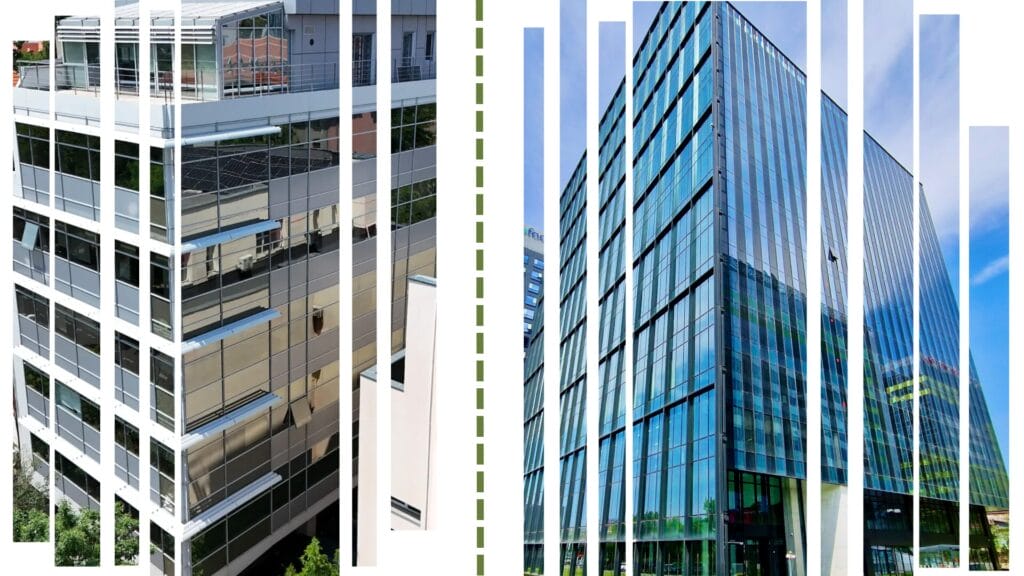
The Romanian office market has undergone a profound transformation in the last decade, marked by the development of high-spec, sustainable buildings and the gradual repositioning of older stock. In this context, the distinction between Class A and Class B office buildings remains critical for investors, landlords, and tenants alike.
But what truly separates these two categories—and how do they perform in today’s market?
Defining the Standards: Class A vs. Class B
Class A offices are typically the flagship assets of any market. They are modern, energy-efficient buildings located in prime business districts, offering top-tier amenities, cutting-edge technology, and premium finishes. In Romania, this class includes landmark buildings in Bucharest’s CBD, northern areas like Floreasca-Barbu Văcărescu, or mixed-use hubs such as Timpuri Noi or Expoziției.
Class B offices, while still functional and suitable for many types of businesses, are generally older, have lower technical specifications, and may lack modern features such as advanced HVAC systems, LEED/BREEAM certifications, or flexible floor plates. They are often located in secondary or peripheral areas or represent outdated stock in otherwise central locations.
Key Comparison Metrics
| Feature | Class A | Class B |
|---|---|---|
| Location | Prime business areas | Secondary zones or fringe CBD |
| Age / Technical Specs | Built after 2010, modern design | Built before 2010, standard specs |
| Certifications | LEED / BREEAM certified | Rarely certified |
| Rent Levels (Bucharest) | €14–€20/sqm/month | €8–€12/sqm/month |
| Tenant Profile | Multinationals, tech, financial firms | SMEs, local companies, back-office |
| Vacancy Rate | Lower due to demand | Higher, especially if not refurbished |
Market Trends & Occupier Behavior
In recent years, the flight to quality has accelerated in Romania. Hybrid work models and ESG (Environmental, Social, and Governance) standards have pushed companies to prioritize well-located, sustainable buildings that support employee well-being and operational efficiency.
As a result:
- Class A buildings continue to attract large corporate tenants and secure longer leases. Even in uncertain economic climates, they maintain lower vacancy and better resilience.
- Class B buildings must now reposition or refurbish to stay competitive. Those in good locations can succeed if upgraded, but outdated buildings without clear investment plans risk obsolescence.
Investment & Asset Management Perspective
From an investor’s standpoint:
- Class A assets yield lower initial returns but offer stability, liquidity, and ESG compliance—key for institutional buyers.
- Class B assets, if acquired at the right price, may offer value-add opportunities, especially through refurbishment or conversion (e.g., into mixed-use or residential).
Outlook for 2025 and Beyond
With supply constrained and demand becoming more discerning, Class A offices in Romania are expected to remain the dominant asset type, especially in cities like Bucharest, Cluj-Napoca, and Timișoara.
Meanwhile, Class B buildings face a crossroad: adapt and reposition or risk being left behind. For tenants seeking cost-effective solutions, these assets remain attractive—but only if properly maintained and managed.
Conclusion
The Romanian office market is increasingly shaped by quality, sustainability, and location. While both Class A and B buildings play important roles, the gap in performance and perception is growing. Whether you’re a tenant seeking the right space, an investor planning your next move, or a developer rethinking your portfolio, understanding this distinction is key to making informed decisions in 2025 and beyond.

